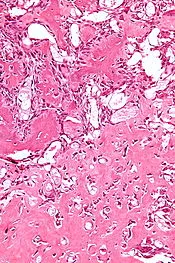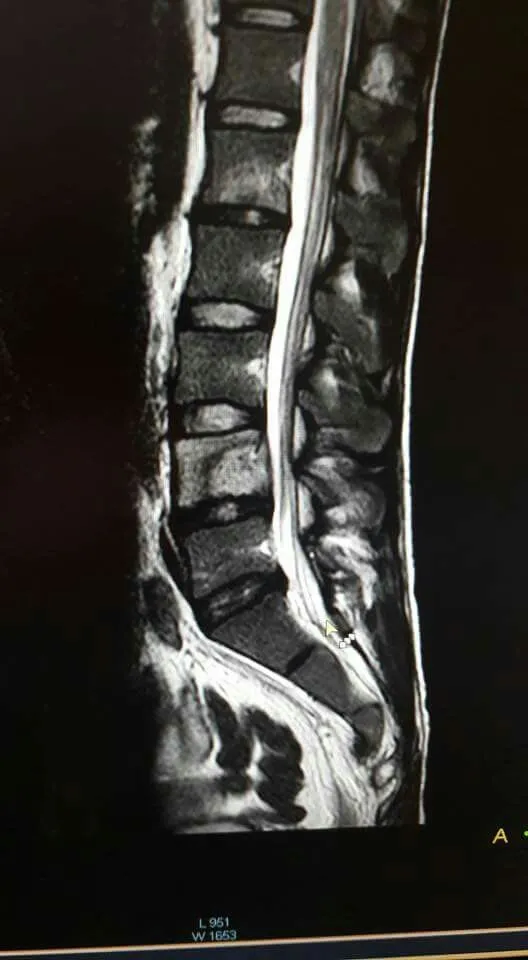Osteoblastoma Overview
Osteoblastoma is a rare and benign bone tumor that primarily affects the spine and long bones. Unlike osteoid osteoma, which it closely resembles, osteoblastoma is larger and tends to cause more aggressive symptoms. It is most commonly diagnosed in adolescents and young adults, with a slight male predominance. Despite being benign, osteoblastoma can be locally aggressive and may require surgical intervention. At Fight Bone Tumors, Dr. Kishore B Reddy and our expert team provide specialized care for patients with osteoblastoma, employing advanced diagnostic tools and personalized treatment plans to manage this rare tumor effectively.
Symptoms:
The symptoms of osteoblastoma can vary depending on its location and size but commonly include:
- Chronic Pain: Often localized to the affected area and not relieved by standard pain medications.
- Swelling or Lump: Noticeable in the affected bone.
- Neurological Symptoms: If the tumor is in the spine, it can cause nerve compression leading to pain, weakness, or numbness in the limbs.
- Limited Range of Motion: Especially if the tumor is near a joint.
- Pathological Fractures: Bones weakened by the tumor may fracture more easily.
Early detection and treatment are crucial to prevent complications and improve outcomes.
Diagnosis:
Diagnosing osteoblastoma involves several steps to confirm the presence of the tumor and assess its characteristics:
- Physical Examination: Initial assessment to evaluate symptoms and overall health.
- Imaging Tests: X-rays, CT scans, and MRI to visualize the tumor, determine its size, and assess its location.
- Bone Scans: Sometimes used to detect increased bone activity indicative of osteoblastoma.
- Biopsy: A sample of the tumor tissue is taken and examined under a microscope to confirm the diagnosis and determine the tumor’s characteristics.
Accurate diagnosis is crucial for developing an effective treatment plan.

Treatment Options:
Treatment for osteoblastoma aims to relieve symptoms, remove the tumor, and restore normal function. Our approach includes:
Surgery:
- Curettage: Scraping out the tumor from the bone, often followed by filling the cavity with bone graft or bone cement.
- En Bloc Resection: Surgical removal of the tumor along with a margin of healthy tissue, typically reserved for larger or more aggressive tumors.
- Spinal Stabilization: If the tumor is located in the spine, additional procedures may be required to stabilize the affected vertebrae.
Radiation Therapy:
- Used in cases where complete surgical removal is not feasible or as an adjunct to surgery to target residual tumor cells.
Observation:
- In some cases, particularly if the tumor is asymptomatic and slow-growing, a watch-and-wait approach may be adopted.
Our multidisciplinary team collaborates to develop personalized treatment plans aimed at achieving the best possible outcomes for our patients.
Support and Rehabilitation:
Managing osteoblastoma involves more than just medical treatment. We offer comprehensive support services to help patients and their families through this journey:
Physical Therapy:
- Essential for recovery post-treatment, aiding in regaining strength and mobility.
Emotional Support:
- Counseling and support groups to address the emotional and psychological impacts of living with osteoblastoma.
Nutritional Guidance:
- Tailored dietary plans to support overall health and recovery during and after treatment.
Follow-Up Care:
- Regular check-ups to monitor for recurrence and manage any long-term side effects of treatment.
FAQ's
Osteoblastoma is a rare and benign bone tumor that primarily affects the spine and long bones. It is larger and more aggressive than osteoid osteoma and most commonly diagnosed in adolescents and young adults.
Common symptoms include chronic pain, swelling or a lump, neurological symptoms if the tumor is in the spine, limited range of motion, and pathological fractures.
Diagnosis typically involves a physical examination, imaging tests (X-rays, CT scans, MRI), bone scans, and a biopsy to confirm the diagnosis and determine the tumor’s characteristics.
Treatment options may include surgery (curettage, en bloc resection, spinal stabilization), radiation therapy, and in some cases, observation.
Curettage is a surgical procedure where the tumor is scraped out from the bone. The cavity is often filled with bone graft or bone cement to support the structure of the bone.
Potential side effects can include pain, swelling, risk of infection, and challenges related to rehabilitation post-treatment. Specific treatments may have their own unique side effects.
Managing side effects can involve rest, physical therapy, proper nutrition, pain management medications, and emotional support through counseling or support groups.
We offer physical therapy, emotional support, nutritional guidance, and regular follow-up care to monitor for recurrence and manage long-term side effects.
With appropriate treatment, many patients can achieve long-term relief and recovery. The prognosis is generally good with proper intervention.
You can schedule a consultation by calling us at +91 9032027279 or emailing info@fightbonetumors.com. Our team is here to provide personalized care and support.





